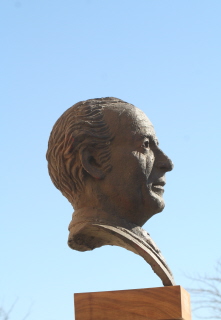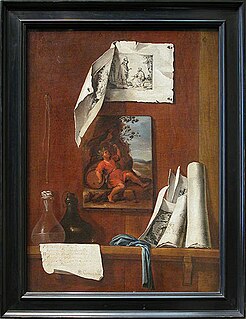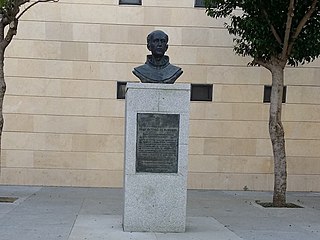Related Research Articles

Seville is the capital and largest city of the Spanish autonomous community of Andalusia and the province of Seville. It is situated on the lower reaches of the River Guadalquivir, in the southwest of the Iberian Peninsula.

Viña del Mar is a city and commune on central Chile's Pacific coast. Often referred to as La Ciudad Jardín, Viña del Mar is located within the Valparaíso Region, and it is Chile's fourth largest city with a population of 324,836. Viña del Mar is also part of the Greater Valparaíso area, the country's third largest metropolitan area, after the Metropolitan areas of Santiago and Concepción. The Greater Valparaíso Area is home to five municipalities: Valparaíso, Viña del Mar, Concon, Quilpue and Villa Alemana.

The Vettones were a pre-Roman people of the Iberian Peninsula of possibly Celtic ethnicity.

The Sierra Morena is one of the main systems of mountain ranges in Spain. It stretches for 450 kilometres from east to west across the south of the Iberian Peninsula, forming the southern border of the Meseta Central plateau and providing the watershed between the valleys of the Guadiana to the north and the west, and the Guadalquivir to the south.

The Turduli or Turtuli were an ancient people of southwesterns areas of the Iberian Peninsula, prior to its conquest by the Roman Empire. The Turduli who lived mainly in the south and centre of modern Portugal – in the east of the provinces of Beira Litoral, coastal Estremadura and Alentejo along the Guadiana valley, and in Extremadura and Andalusia in Spain.

Aznalcázar is a town located in the province of Seville, southern Spain. It is only 20 minutes away from Seville, and is one of the 13 towns located in Doñana National Park, one of Spain's most important national parks and wildlife reserves.
Olivares is a city located in the Province of Seville, Spain. According to the 2016 census (INE), the city has a population of 9480 inhabitants. It is located in the Aljarafe, the comarca downstream of the Guadalquivir and west of Seville. It borders Albaida to the west, Gerena to the north, Salteras to the east, and Sanlúcar la Mayor and Villanueva del Ariscal to the south. After the establishment of the House of Olivares, it grew in size and influence, becoming an important urban center in the Aljarafe.

Alcaudete is a city located in the province of Jaén, Andalusia, Spain. As of 2018, it has a population of 10,558. It is home to a 12th-14th century Moorish castle, located on the top of the hill commanding the town. Other sights include the Iglesia de Santa María la Mayor.

Antonio León Ortega, Spanish sculptor known for his Andalusian imagery.

Pedro de Campolargo was a Flemish painter and engraver, who was active during the Baroque period and formed part of a large group of Flemish artists mostly from Antwerp who were active in Seville in the second half of the 17th century.

Cipriano Muñoz y Manzano, 2nd Count of la Viñaza, was a Spanish diplomat and academic who served as a deputy to the Spanish Congress and published notable works on linguistics, philology, and art history.

The economy of Hispania, or Roman Iberia, experienced a strong revolution during and after the conquest of the peninsular territory by Rome, in such a way that, from an unknown but promising land, it came to be one of the most valuable acquisitions of both the Republic and Empire and a basic pillar that sustained the rise of Rome.

Rubén Caba, born in Madrid, is a Spanish novelist and essayist. Degrees in Law and in Philosophy at de Universidad Complutense de Madrid. And graduated in Sociology at Instituto de Estudios Políticos, Madrid.

The Treviño Enclave in northern Spain is part of the territory of the province of Burgos, but is completely surrounded by the territory of the Basque Country province of Álava. Thus, it is an enclave of the Basque Country and an exclave of Castile and León. It consists of two municipalities—Condado de Treviño and La Puebla de Arganzón—and is part of the legal district of Miranda de Ebro in the province of Burgos.
Eloísa Gómez-Lucena is a Spanish contemporary writer.

Antonio de San Buenaventura y Olivares or simply Fray Antonio de Olivares was a Spanish Franciscan who officiated at the first Catholic Mass celebrated in Texas, and he was known for contributing to the founding of San Antonio and to the prior exploration of the area.

The Archbishop's Palace of Seville is a palace in Seville, Spain. It has served as the residence of bishops and archbishops of the episcopal sees and numerous nobleman and military figures to the present time. It is located in the southern section of Seville, in the Plaza Virgen de los Reyes, angled almost opposite the Giralda. It is situated on the northeastern side of Seville Cathedral in the neighborhood of Santa Cruz. Of Spanish Baroque architectural style, it has had the status of National Monument since 1969.
Bermudo Ovéquiz was a member of the highest ranks of the nobility of Asturias, León, and Galicia who lived in the 11th-century.
The 82nd Mixed Brigade was a unit of the Spanish Republican Army created during the Spanish Civil War. It came to operate on the Teruel and Levante fronts.
Lastigi was an ancient Tartessian city in southern Spain, settled by the Romans in the 2nd century BC. It is mentioned by Pliny the Elder in his Natural History as lying on the Menoba River (Guadiamar) near the towns of Laelia and Olontigi. He mentions it again as a town in the Celtic region, whose boundaries are not clear, but may extend from Málaga to the Guadiana. Its exact location has been debated by historians since the 19th century. The following sites have been proposed, in chronological order:
References
- 1 2 3 4 5 Rufino, Antonio Caballos; Carrasco, José Luis Escacena; Tristán, Francisca Chaves (2005). "Identificación toponínima del Cerro de la Cabeza". Arqueología en Laelia, Cerro de la Cabeza, Olivares, Sevilla: campaña de excavación de 1981 (in Spanish). Universidad de Sevilla. pp. 43–56. ISBN 978-84-472-0812-8.
- ↑ Rufino, Antonio Caballos; Carrasco, José Luis Escacena; Tristán, Francisca Chaves (2005). "La amonedación de Laelia". Arqueología en Laelia, Cerro de la Cabeza, Olivares, Sevilla: campaña de excavación de 1981 (in Spanish). Universidad de Sevilla. pp. 57–66. ISBN 978-84-472-0812-8.
- 1 2 Ortiz de Urbina, Estíbaliz (1996). Teoría y práctica del ordenamiento municipal en Hispania: actas del Symposium de Vitoria-Gasteiz (22 a 24 de Noviembre de 1993) (in Spanish). Universidad del País Vasco. p. 205. ISBN 978-84-7585-856-2.
- ↑ Campos Carrasco, Juan M.; Bermejo Meléndez, Javier (2018). "Laelia". Ciudades romanas de la provincia Betica: Volumen II (in Spanish). Servicio de Publicaciones de la Universidad de Huelva. p. 134. ISBN 978-84-17776-09-1.
- ↑ Amador de los Ríos, Rodrigo (1891). Huelva (in Spanish). Barcelona, Spain: Establecimiento Tipográfico "Artes y Letras". p. 716.
- ↑ Cortés y López, Miguel (1836). Diccionario geográficohistórico de la España antigua, Tarraconense, Bética y Lusitana, con la correspondencia de sus regiones, ciudades, montes, rios, caminos, puertos e islas a las conocidas en nuestros días, 3 (in Spanish). Madrid, Spain: Imprenta Real. p. 115.